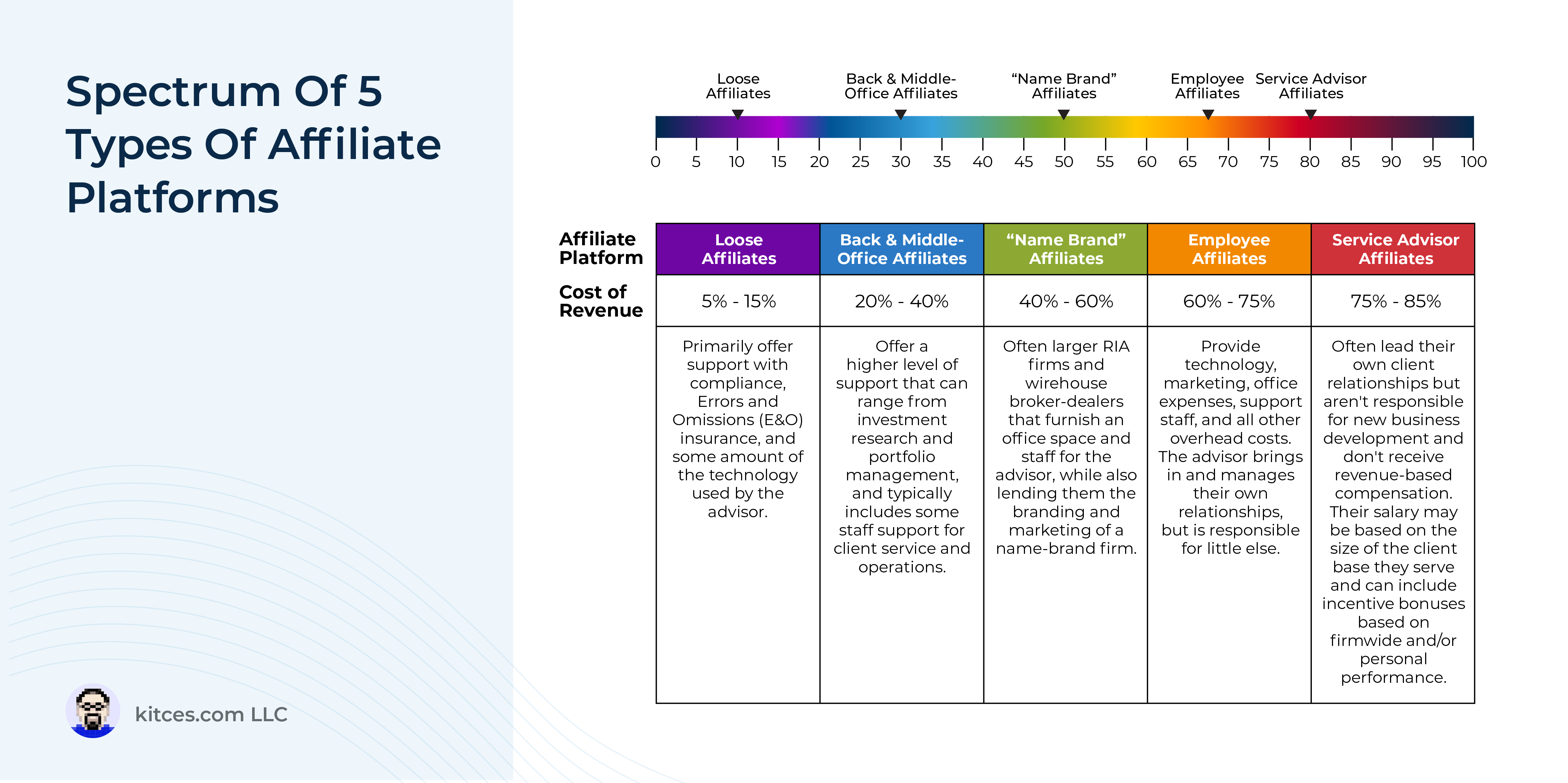Broadly speaking, there are 2 models of working as a financial advisor: operating independently as a firm owner or with a large affiliate platform such as a wirehouse broker-dealer, independent broker-dealer, or larger corporate RIA. Deciding which model to work under is a key moment in beginning or evolving a career as an advisor.
In the independent model, owners/advisors are generally paid directly by the clients they serve, and they select and pay for the vendors, services, and employees that support them, whereas in the affiliated model, a number of the advisory firm functions are covered by the affiliate platform, with the cost of those services being bundled into the affiliate platform’s fee. The key difference from a financial standpoint is that while clients of independent advisors usually pay the entire amount of their fees directly to the advisor, clients of affiliated advisors often pay their fees to the affiliate platform itself, with the platform passing on a percentage of the income to the advisor (and the amount that the platform keeps represents the platform’s fee to the advisor for the services they provide).
As a result, many advisors using the affiliate model don’t really ‘see‘ the fees that they pay to their affiliate platform, since the only revenue they see is what’s left over after the platform has taken their fee. Which in turn makes it more difficult to assess how much the advisor is really paying the affiliate platform, and what they’re receiving in exchange for their fee – and ultimately, whether the amount that the advisor is paying the platform is worth what they’re getting in return.
Notably, different affiliate platforms have different payout rates; those that pay out the most (and thus have the lowest fees) tend to cover relatively few functions such as compliance and technology, while those that pay out the least (and therefore have the highest fees) cover a significant amount of the advisor’s overhead costs. Which means that using the platform with the highest payout rate won’t necessarily result in the most take-home income for the advisor (since they’re still responsible for paying all of the overhead costs that aren’t covered by the platform); rather, it’s more about whether and how the platform’s services align with what the advisor needs to succeed in their role – for instance, if an advisor earning primarily fee-based advisory revenue affiliates with a platform that puts a lot of resources towards FINRA compliance for broker-dealer representatives, they’ll end up paying significantly for a service that they rarely (if ever) use.
The key point is that regardless of whether advisors use the independent or affiliate model, achieving success as an advisor involves finding the best use of the advisor’s resources to leverage support for the functions that they can’t perform (or don’t want to manage) on their own. Being clear on how an affiliate platform’s services align with what the advisor truly needs to outsource can help save advisors from putting resources towards functions that they don’t need or use. Ultimately, while some advisors might simply prefer the autonomy of the independent model, it’s possible to be successful in whichever model provides the support that the advisor needs to make the best use of their time.


